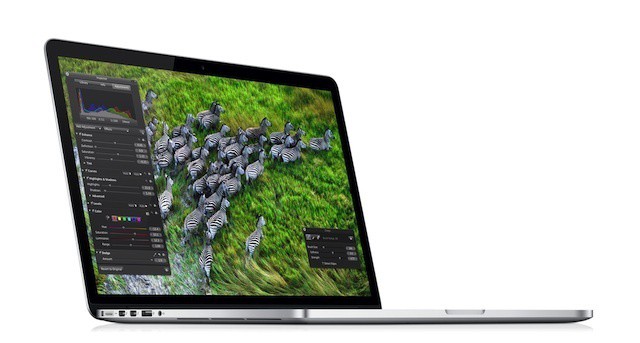The new Retina MacBook Pro is the most pixel-loaded Apple device yet, with more than five million of the little blighters spread over 220 pixels per inch. That’s a lot of tiny dots, but believe it or not, it only translates to a mere five megapixels. And since the iPhone has had a 5 megapixel camera since 2010, pictures taken on an iPhone 4 or iPhone 4S should be able to take full advantage of the Retina MacBook Pro’s 2880 x 1800 resolution display.
So why is it that photos taken with an iPhone 4 or iPhone 4S look so crappy on a Retina MacBook Pro? That’s what Instapaper developer Marco Arment wants to know, and so do we. We have a theory though.
Over at his blog, Marco Arment writes:
As part of my 2012 computer-setup shuffle, I also replaced my laptop with a Retina MacBook Pro, and the first thing it screams for is a high-resolution desktop wallpaper. Great, I thought, I’ll just use one of my photos. (On my desktop, I use a solid gray background, but on my laptop, I like to have a bit of fun. And it would be a crime to put a solid gray background on that screen.)
Almost nothing I’ve shot since 2010 is usable.
The Rebel photos look decent. The 5D Mark II photos look great. But photos from the iPhone 4, and even from the 4S, don’t hold up. They look fine on a 3.5-inch screen, but they look terrible on my big desktop monitor and abysmal on the Retina MacBook Pro.
I’m no expert, but my guess is that this has nothing to do with mere megapixels. In fact, across the board, the quality of a digital photograph has less to do with how many pixels it is made up of and more to do with the quality and size of the camera sensor.
Here’s the deal. In digital photography, there’s usually a direct correlation between the size of a camera sensor and how light sensitive it is. That’s why SLR cameras are so big. There’s ways around the size limitation though. If a camera sensor doesn’t have enough light hitting it to take a clear picture, what you can do is up the ISO and make it more sensitive to light. But there’s a drawback: when you do that, you also introduce more noise into the image.
Because of the size of the device, the camera sensor in the iPhone 4 and iPhone 4S has to be pretty tiny, and it’s consequently not as light-sensitive as a larger sensor. Apple compensates for this smaller sensor in various clever ways, but one of the big ways it compensates is by automatically and aggressively adjusting the ISO of every picture you take.
My guess is that this is the problem Marco Arment is running into. His iPhone pictures look great on a 3.5 or even 9.7-inch display, but the amount of noise being introduced by the automatic ISO adjustment is much, much more noticeable at 15-inches.
The good news is that Apple’s smartphone cameras just keep on getting better, and I would think that the iPhone 5 will continue that trend. Maybe by October, Apple’s iPhone cameras will finally catch up with the incredible display technology of the Retina MacBook Pro.
Source: Marco.org


